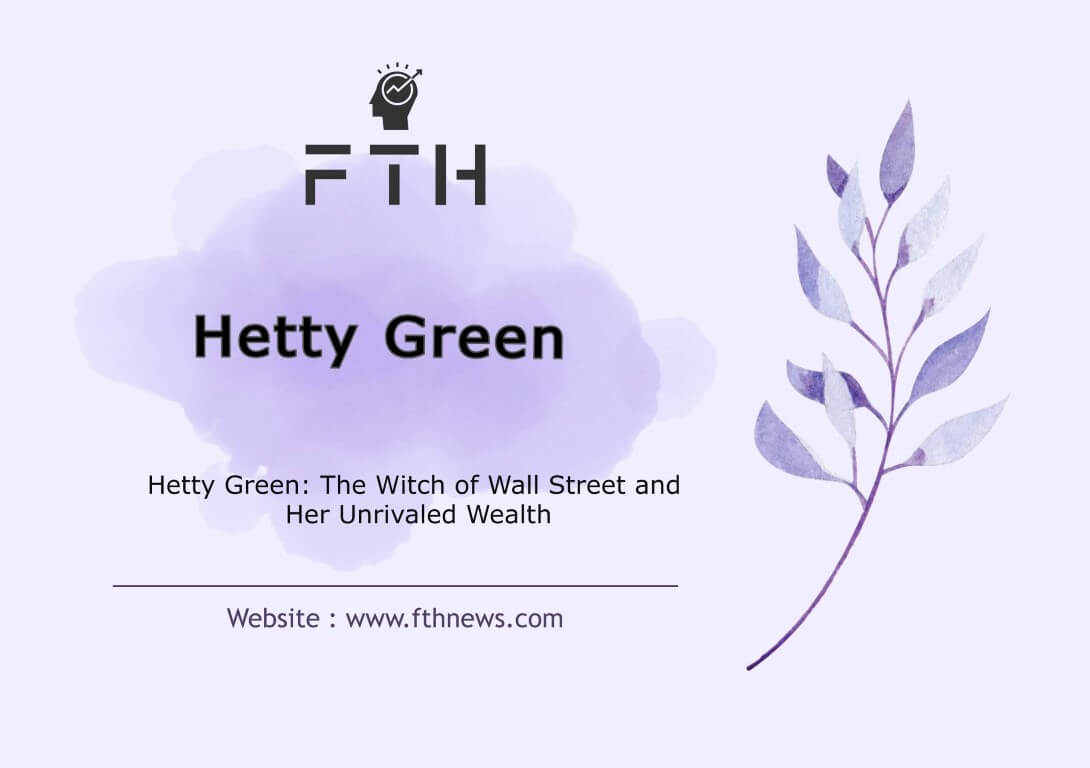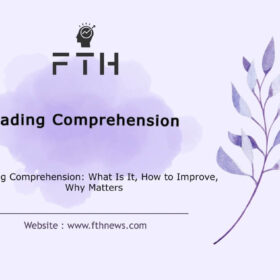
Hetty Green: The Witch of Wall Street and Her Unrivaled Wealth
In the world of finance, few names echo through history with as much intrigue and peculiarity as Hetty Green, the Witch of Wall Street. Known for her extreme frugality and unparalleled financial acumen, Hetty Green left an indelible mark on the financial landscape of her time. In this blog post, we will delve into the life of this enigmatic figure, exploring her early years, investment strategies, and the controversies that surrounded her. Join us on a journey into the life of the stingiest person in the world who earned her place in the Guinness Book of Records.
The Early Years of Hetty Green:
Born Nerita Howland Robinson in 1834, Hetty Green’s childhood was steeped in the opulence of New Bedford, Massachusetts, where her family reigned as the wealthiest in town. The daughter of Edward Mott Robinson, a prominent figure in the local whaling industry, young Hetty’s early life was surrounded by the echoes of maritime prosperity.
Her financial acumen began to manifest at an astonishingly early age. By six, Hetty was already immersing herself in economic news, absorbing the intricacies of finance with an insatiable curiosity. Her father, recognizing her innate talent, became her first mentor, guiding her through the labyrinth of economic principles and market dynamics.
At the tender age of eight, Hetty Green took her first step into the financial world by opening her inaugural bank account. This seemingly mundane act was a testament to her precocious intellect, a sign of things to come for the young prodigy. The world of mathematics, investments, and financial strategy was not just a playground for Hetty; it was a realm where she excelled, setting the stage for a remarkable journey into the world of finance.
Hetty Green Financial Success and Investment
Hetty Green’s legacy is not confined to the wealth she amassed but extends to the transformative impact she had on financial practices and societal perceptions. In her death in 1916, the financial world mourned the passing of a trailblazer who left an indelible mark on Wall Street.
Investment Pioneer: Green’s contributions to finance transcend her personal fortune. As a pioneer of value investing, her strategies laid the groundwork for future investors, challenging conventional norms and reshaping investment philosophies. Her foresight and financial acumen shattered gender stereotypes, paving the way for women in the male-dominated world of finance.
Philanthropy in Disguise: Despite her notorious frugality, Green’s commitment to discreet charity showcased a compassionate side often overshadowed by her financial prowess. Her effective nursing care for neighbors and her favorite poem, “My Symphony” by William Henry Channing, reflected a nuanced personality that combined financial shrewdness with a genuine concern for others.
Financial Wizardry Lives On: Renowned financial expert Ken Fisher acknowledged Green’s financial prowess, describing her as a “financial wizard” in his book “100 Minds.” Despite her idiosyncrasies, she outshone many of her Wall Street contemporaries, understanding the power of compound interest and living frugally to ensure the durability of her wealth.
In death, Green’s net worth estimates ranged from $2.49 billion to $4.98 billion, solidifying her status as the richest woman of her time. Her burial next to her husband in Blues Falls, Vermont, marked the end of an era, but her financial wizardry and lasting influence continue to inspire and intrigue.
Hetty Green Personal Life and Controversies
Even amidst Hetty Green’s unparalleled financial success, her life was a tapestry woven with controversy and enigma. The moniker “Witch of Wall Street” has etched itself into history, yet its origins remain shrouded in debate. Some argue that it was a reflection of her financial practices—bold, unconventional, and often contrary to the norms of her time. Others contend that the epithet bears the markings of the prevalent sexism of the era, attempting to diminish the achievements of a woman in a male-dominated domain.
The Enigmatic Witch:
Green’s financial prowess and unyielding business acumen might have earned her admirers, but it also garnered critics who were quick to label her with the provocative title. The moniker, rather than being a mere reflection of her practices, became emblematic of the challenges she faced as a woman thriving in a predominantly male sphere.
Controversies Beyond Wealth:
Beyond her financial exploits, Hetty Green’s personal life was marred by controversies, often fueled by legal battles over family wills. These skirmishes added layers to the mystique surrounding her, painting a portrait of a woman not only navigating the complexities of the financial world but also contending with the intricate dynamics of familial relationships.
Sexism and Legacy:
The controversy surrounding Green’s nickname is a testament to the sexism ingrained in the societal fabric of her time. As a woman daring to challenge the status quo and assert herself in the world of finance, she became a target for those resistant to change. The Witch of Wall Street, far from being a mere title, became a symbol of defiance against the prevailing norms.
Unraveling the Mystique:
As we delve into the controversies that surrounded Hetty Green, we find a woman whose life extended beyond the ledgers and balance sheets. The Witch of Wall Street was not just a financial luminary but a trailblazer challenging societal expectations, leaving an indelible mark on the pages of history.
In navigating the complexities of controversy, Hetty Green’s life becomes a compelling narrative of resilience, challenging norms, and standing firm in the face of societal biases. Her legacy extends beyond financial success, reminding us that breaking barriers often comes with its share of mystique and controversy.
Hetty Green The Stingiest Woman
Hetty Green’s legendary stinginess stands as a defining aspect of her intriguing persona. Her frugality, often bordering on the extreme, has left an indelible mark on the annals of financial history.
Frugality Beyond Limits:
Green’s aversion to spending manifested in extraordinary ways. She went to great lengths to avoid using a heater or oven in her home, opting for a life of austerity that extended far beyond societal norms. This refusal to indulge in even basic comforts showcased a level of frugality that set her apart even in an age where financial restraint was lauded.
Wardrobe of Austerity:
Perhaps one of the most notorious manifestations of Green’s stinginess was her approach to clothing. Wearing the same clothes until they transformed into rags became a hallmark of her eccentric lifestyle. Her wardrobe choices were not just a testament to thrift but also a deliberate statement, reinforcing her commitment to a life devoid of unnecessary expenses.
A Tragedy Unfolds:
Green’s unwavering commitment to saving money took a tragic turn when her son suffered a broken leg. Rather than seek immediate and potentially costly medical assistance, she adamantly pursued free medical help, resulting in the onset of gangrene. The eventual loss of her son’s leg serves as a poignant reminder of the extremes to which her stinginess reached, leaving a permanent scar on her personal legacy.
Balancing Act of Avarice:
While Green’s stinginess often drew criticism, it was also a key element of her financial success. Her ability to relentlessly cut costs, even at the expense of personal comfort or familial well-being, contributed to her amassing an immense fortune. It was a balancing act where financial gains came at the cost of personal relationships and, in the tragic case of her son, even health.
Legacy of Extreme Frugality:
Hetty Green’s stinginess has left an enduring legacy, sparking fascination and debate. Her life serves as a cautionary tale about the perils of an unrelenting pursuit of wealth at the expense of basic human needs and compassion. In the world of finance, her name remains synonymous with extreme frugality, a testament to the extraordinary lengths one can go to accumulate wealth, even at the cost of personal well-being.
Hetty Green Legacy and Death:
The passing of Hetty Green in 1916 signaled the close of a chapter, leaving behind a legacy that continues to captivate financial enthusiasts and historians alike. Her death, shrouded in the peculiar circumstances of a dispute over the price of skim milk, unveiled the depths of her unwavering dedication to frugality until her final moments.
Dedication to Thrift:
Even in death, Hetty Green’s commitment to saving money remained resolute. The dispute over the price of skim milk at a supermarket served as a poignant testament to a lifetime spent scrutinizing every expense. Her dedication to thrift, even in the minutiae of daily life, reinforced the image of a woman whose financial principles were as steadfast in death as they were in life.
Posthumous Recognition:
In the aftermath of her demise, Hetty Green received posthumous acclaim as a “financial wizard.” Her life’s work, marked by astute investments, strategic financial maneuvers, and legendary frugality, had left an indelible mark on the financial landscape. The acknowledgment of her financial wizardry was a fitting tribute to a woman who had reshaped the norms of her time.
A Staggering Legacy:
Estimates of Hetty Green’s posthumous net worth ranged between $2.49 billion and $4.98 billion, underscoring her status as the richest woman of her era. This staggering wealth not only solidified her place in history but also highlighted the enduring impact of her financial strategies. Her ability to transform a modest inheritance into a colossal fortune, coupled with her keen understanding of financial markets, secured her a position of unparalleled affluence.
A Woman Ahead of Her Time:
As the richest woman of her time, Hetty Green’s legacy transcends the numerical values of her wealth. She stands as a testament to a woman who defied societal expectations, challenged gender norms in finance, and left an enduring imprint on the world of investments. Her financial acumen, though marked by controversy and extremes, paved the way for future generations of investors to rethink traditional approaches.
In death, Hetty Green’s legacy remains a complex narrative of financial brilliance, eccentricities, and an unwavering commitment to thrift. Her story continues to spark intrigue, serving as a reminder that the pursuit of wealth, when coupled with astute financial strategies, can carve out a lasting place in the annals of history.
Hetty Green Investment Philosophy:
Hetty Green’s success in the financial world was not merely a product of luck; it was a result of a carefully crafted investment philosophy and a unique approach to financial decision-making. Delving deeper into her specific strategies unveils a trailblazer who defied conventions and carved her path to wealth.
1. Contrarian Approach:
Green was a pioneer of contrarian investing, a strategy that involves going against prevailing market trends. Rather than following the crowd, she had a keen eye for identifying undervalued assets and investments that others overlooked. Her mantra was to buy when assets were scarce and unpopular, holding onto them until market sentiment shifted.
2. Value Investing Before Its Time:
Long before Benjamin Graham became the recognized father of value investing, Hetty Green was implementing similar principles. She focused on the intrinsic value of assets, seeking those with solid fundamentals that were temporarily undervalued. This approach, unconventional in her time, became a hallmark of her investment strategy.
3. Pragmatic Decision-Making:
Green’s decisions were not driven by speculation or emotion. She meticulously researched potential investments, relying on data and analysis to inform her choices. This pragmatic approach set her apart in an era where speculative investments were prevalent, and emotions often influenced financial decisions.
4. Resilience in Crisis:
One of Green’s most remarkable traits was her resilience during financial crises. Her ability to weather economic storms and make strategic investments during turbulent times distinguished her as a shrewd investor. Notably, she played a pivotal role in stabilizing New York City during the Panic of 1907 when traditional banks failed to do so.
5. Patience and Long-Term Vision:
Green’s success was not built on short-term gains but rather on a patient, long-term vision. She held onto investments even when faced with adversity, allowing compound interest to work its magic over time. This patient and disciplined approach contributed significantly to the staggering growth of her wealth.
Understanding Hetty Green’s investment philosophy unveils a woman who was not just financially savvy but also a trailblazer in adopting strategies that would later become foundational principles in the world of finance. Her contrarian, value-driven, and patient approach left an enduring legacy that continues to influence investors and financial thinkers to this day.
Hetty Green’s Impact on Wall Street:
Hetty Green’s presence in the financial world during her time left an indelible mark on Wall Street, influencing not only the trajectory of her own wealth but also shaping perceptions and possibilities for women in finance. Exploring her impact reveals a trailblazer whose success paved the way for broader discussions on gender equality in the realm of investments.
1. Breaking Gender Barriers:
Hetty Green’s success as a woman in finance during the 19th and early 20th centuries was a groundbreaking achievement. In an era dominated by male financiers, her ability to navigate the complexities of Wall Street and amass an immense fortune shattered preconceived notions about gender roles in finance. While she may not have single-handedly opened the floodgates for women in finance, her accomplishments undeniably challenged stereotypes.
2. Redefining Financial Norms:
Green’s unconventional and often contrarian investment strategies challenged the established norms of her time. By consistently demonstrating that financial success was not bound by gender, she prompted a reevaluation of the traditional roles women were expected to play in the financial world. Her legacy helped redefine the perception of what women could achieve in the realm of finance.
3. Influence on Investment Practices:
While Hetty Green’s specific investment practices were highly individualistic, her success contributed to a broader shift in how investors approached finance. Her emphasis on value investing, contrarian strategies, and resilience during economic downturns influenced subsequent generations of investors. Elements of her approach can be seen in the principles of value investing that gained prominence in the mid-20th century.
4. Catalyst for Gender Discussions:
Hetty Green’s prominence initiated conversations about gender equality in finance. Her success sparked discussions about the barriers women faced in entering the financial sector and the need for greater inclusivity. While progress was gradual, Green’s legacy served as a catalyst for ongoing dialogues on diversity and inclusion in the financial industry.
5. Opening Doors for Future Generations:
While Hetty Green may not have directly opened doors for women in finance during her lifetime, her legacy contributed to changing perceptions. As society progressed, more women entered the financial sector, building upon the groundwork laid by Green. Her story became an inspirational tale for subsequent generations of women aspiring to make their mark in the financial world.
Hetty Green’s impact on Wall Street extends beyond the confines of her personal success. By challenging gender norms and influencing investment practices, she played a pivotal role in shaping the evolving landscape of finance, setting the stage for increased diversity and equal opportunities in the years to come.
Conclusion:
Hetty Green, the Witch of Wall Street, was a complex figure whose life was defined by financial genius, controversy, and legendary stinginess. From her early years marked by financial precocity to her strategic investments that shaped the economic landscape, Hetty Green’s legacy continues to captivate. In an age of excess, her story serves as a reminder of the extraordinary impact one individual can have on the world of finance, leaving behind a tale that transcends generations.
FAQ
Hetty Green’s wealth was inherited by her two children, Edward Howland Robinson Green and Sylvia Green Wilkes, upon her death in 1916.
Yes, Hetty Green had two grandchildren, Edward Howland Robinson Green Jr. (Ned’s son) and Sylvia Green Wilkes’ daughter.
Hetty Green’s fortune was inherited by her son, Edward Howland Robinson Green, and her daughter, Sylvia Green Wilkes.
Estimates of Hetty Green’s net worth at the time of her death in 1916 ranged from $2.49 billion to $4.98 billion.
Hetty Green is often considered one of the most miserly individuals in history, earning her the moniker “The Witch of Wall Street.”
Hetty Green is frequently cited as one of the greatest misers of all time, known for her extreme frugality and wealth accumulation strategies.














